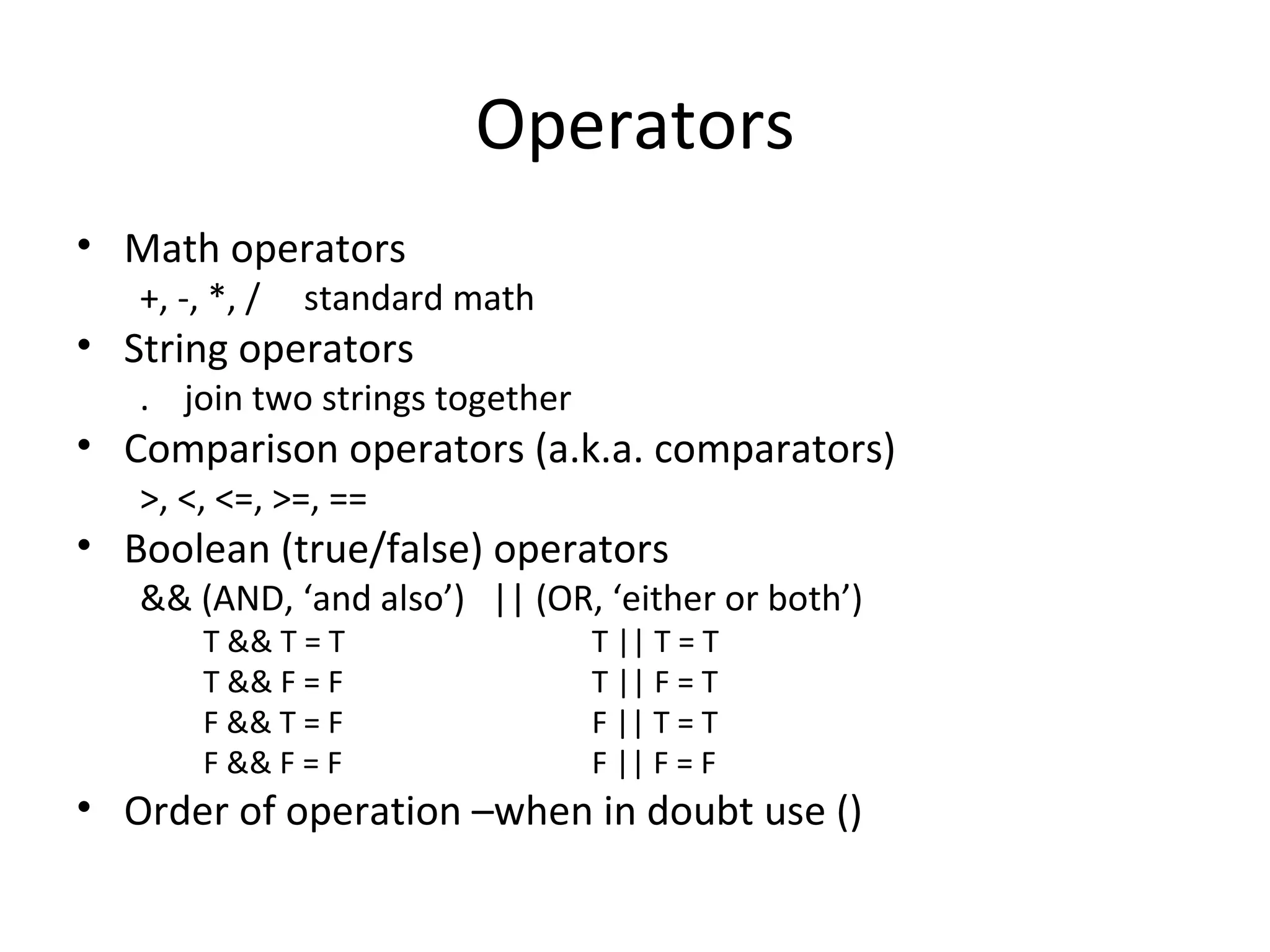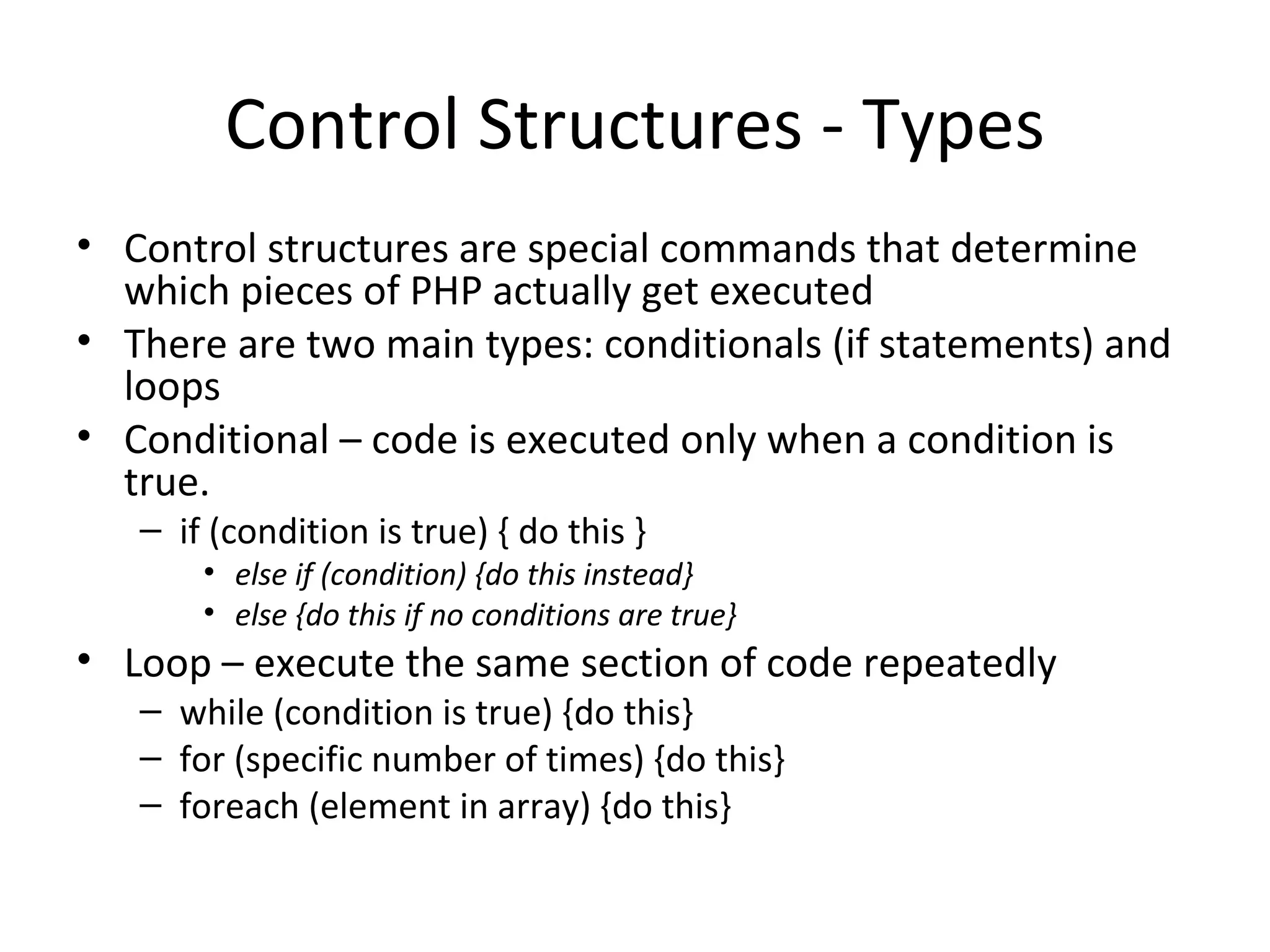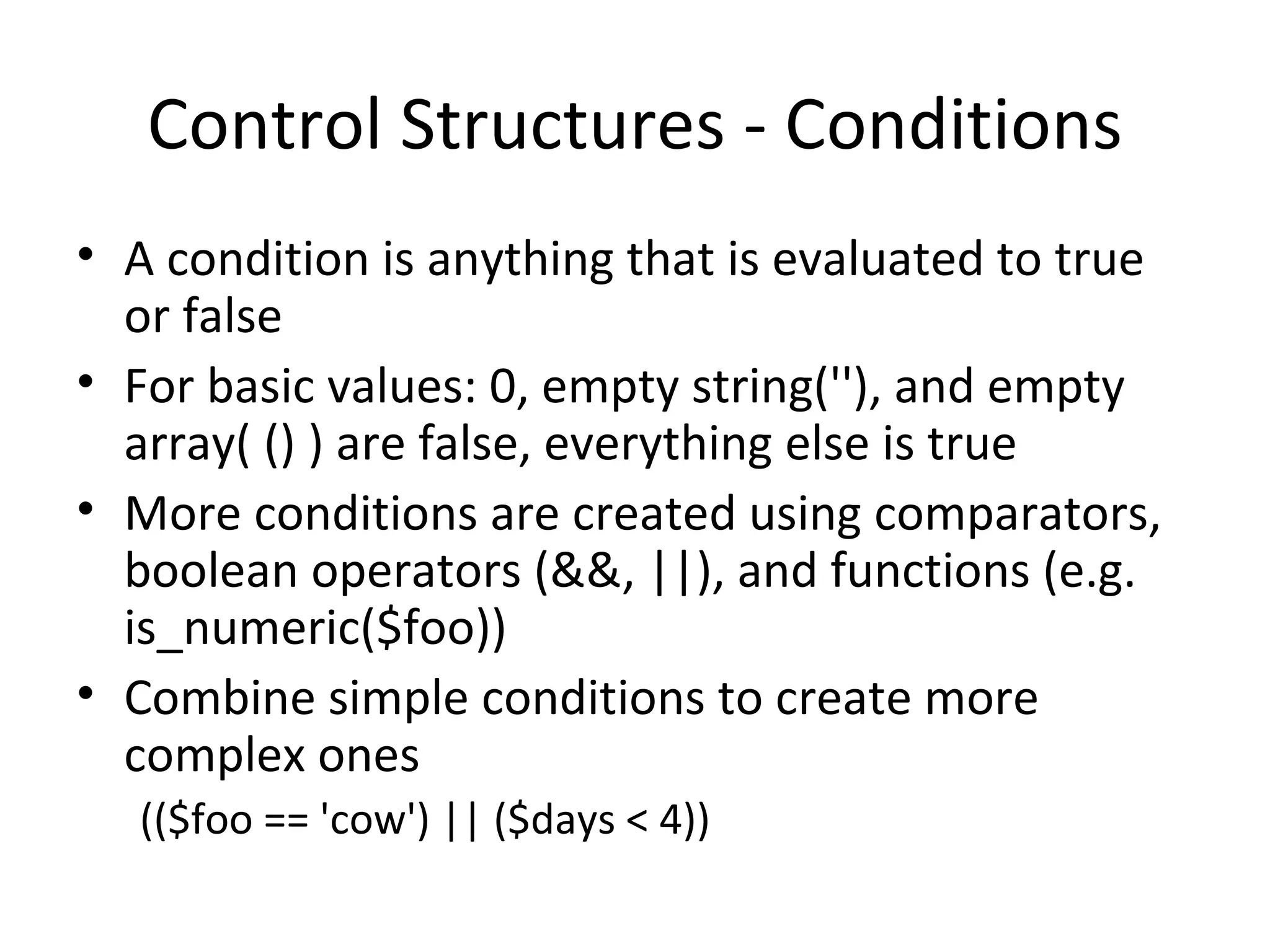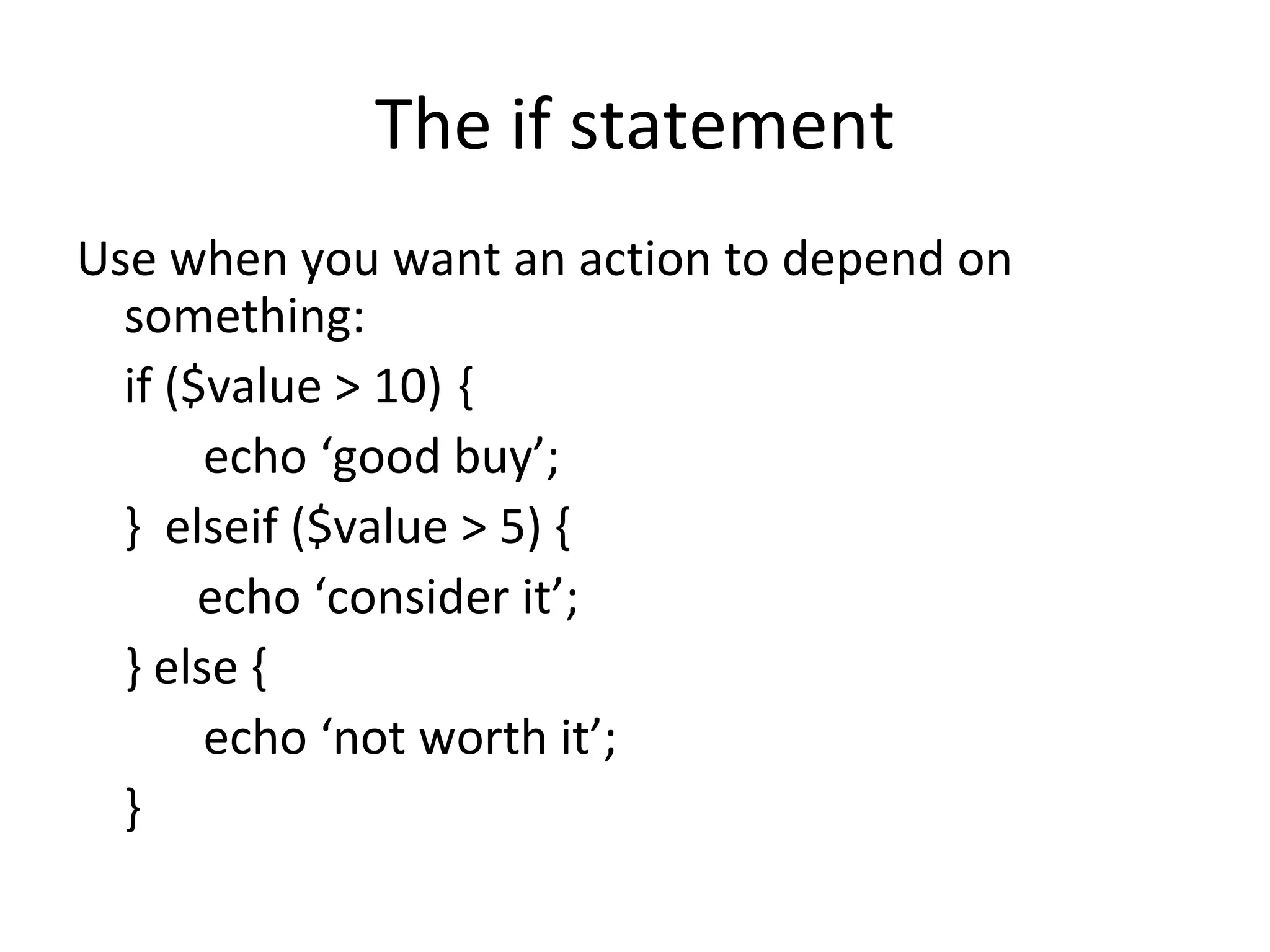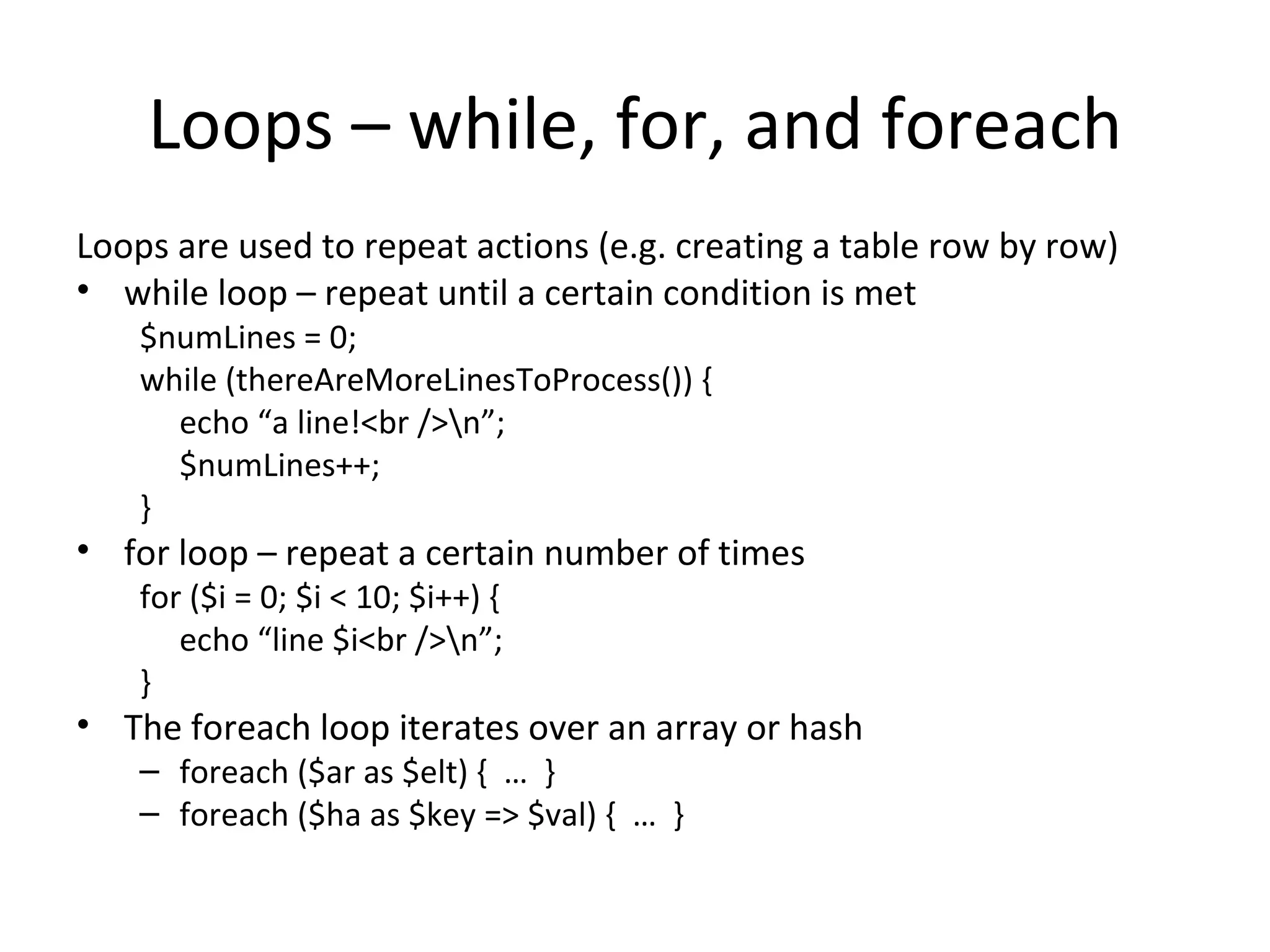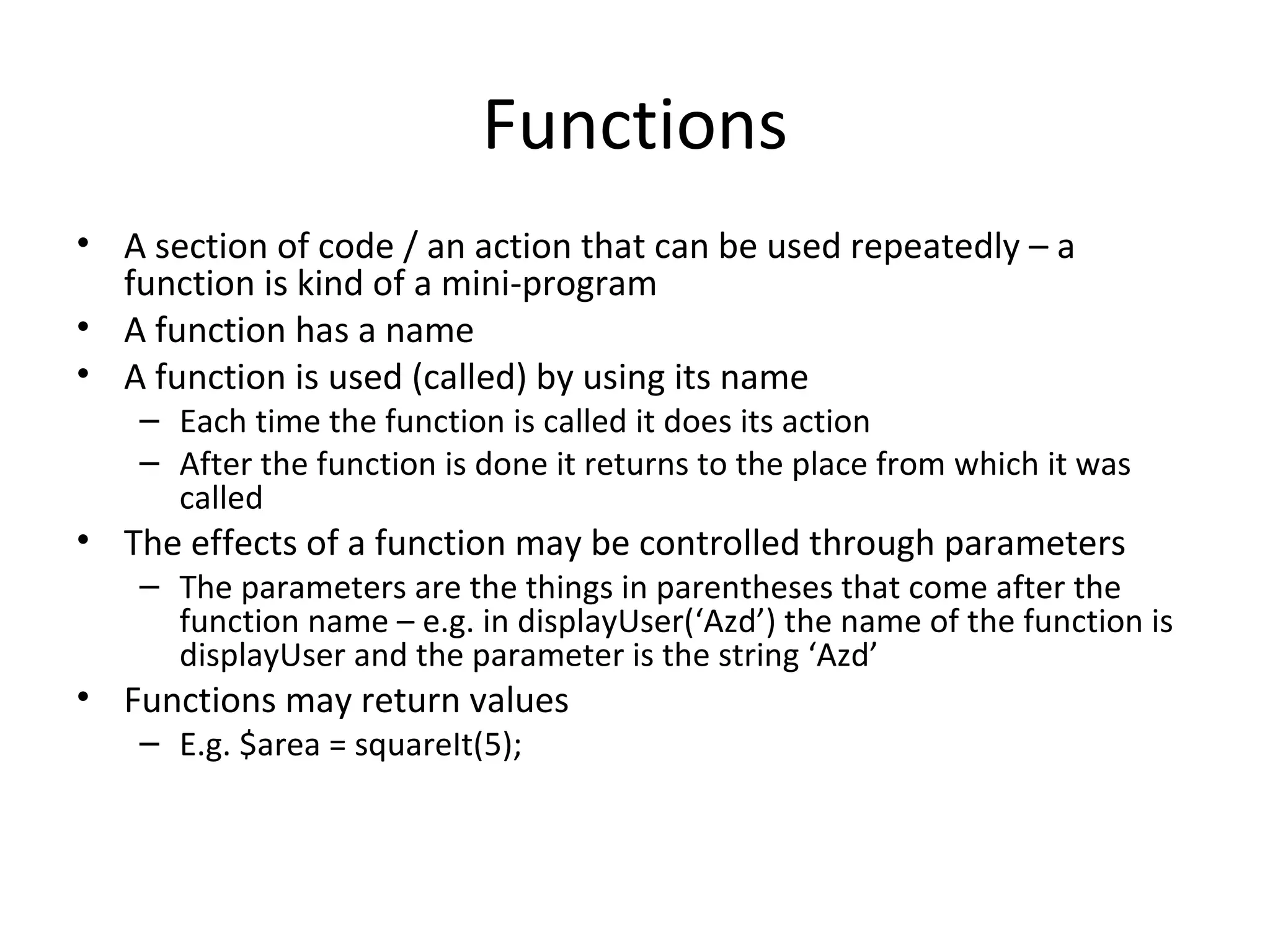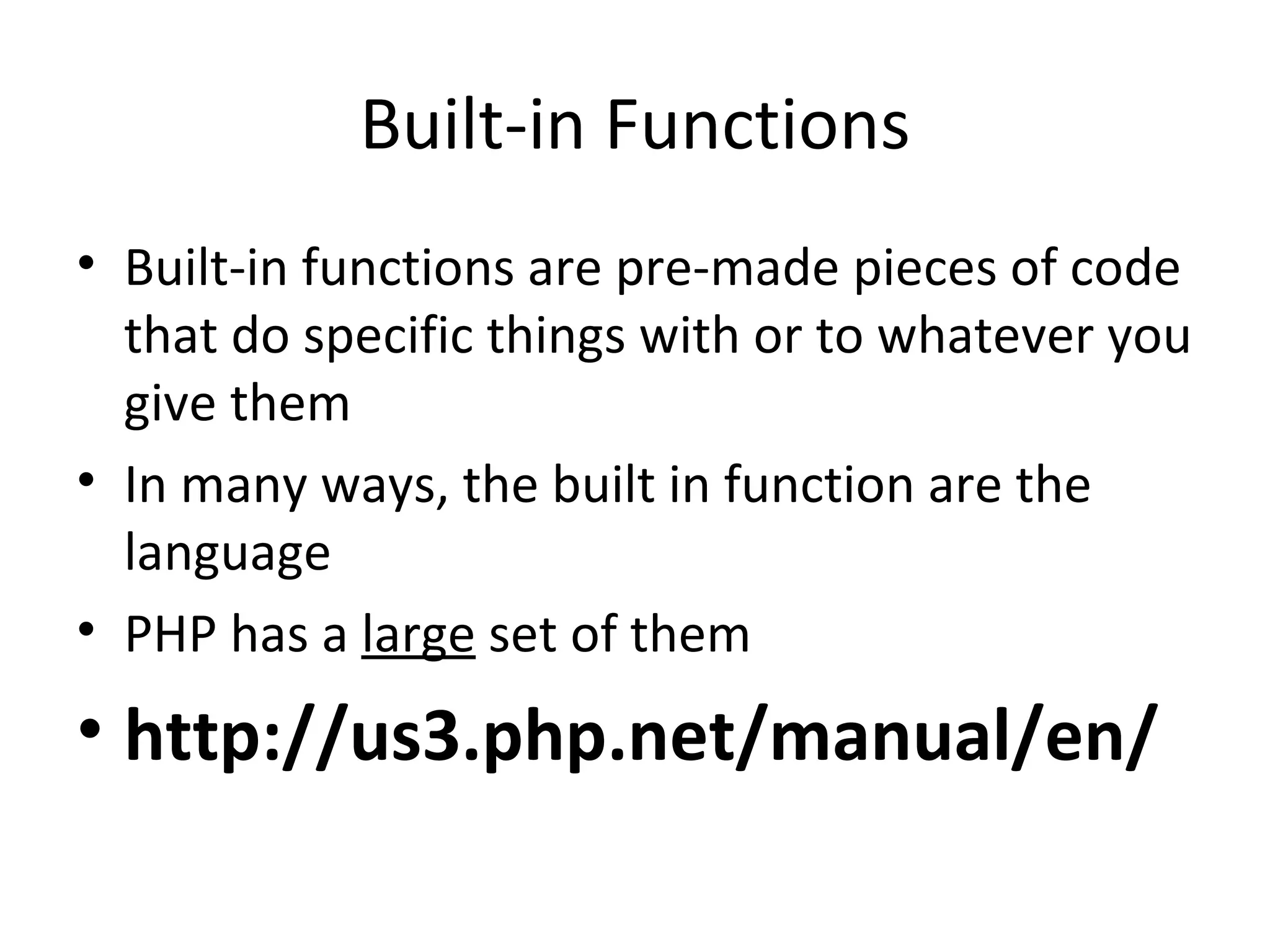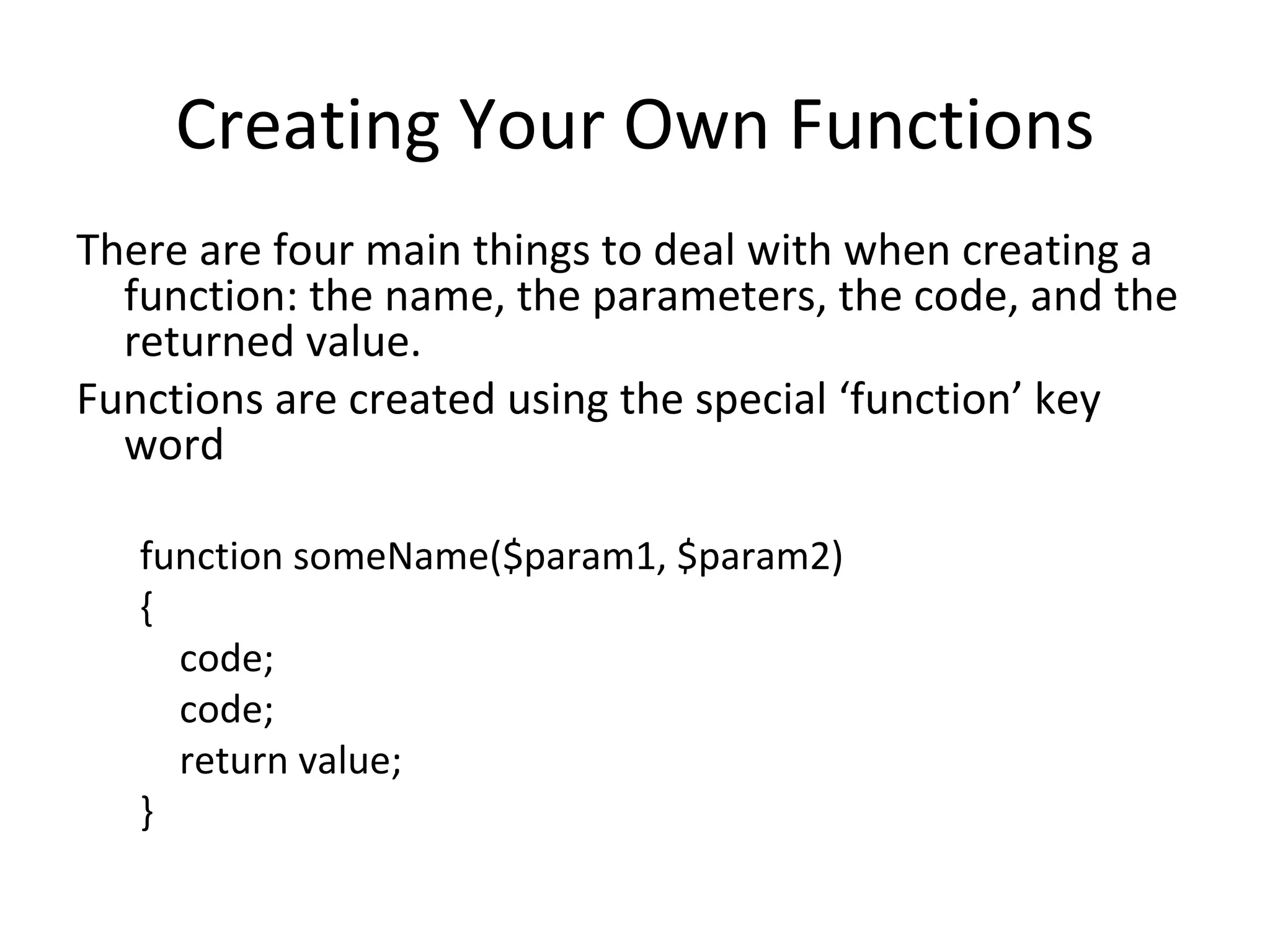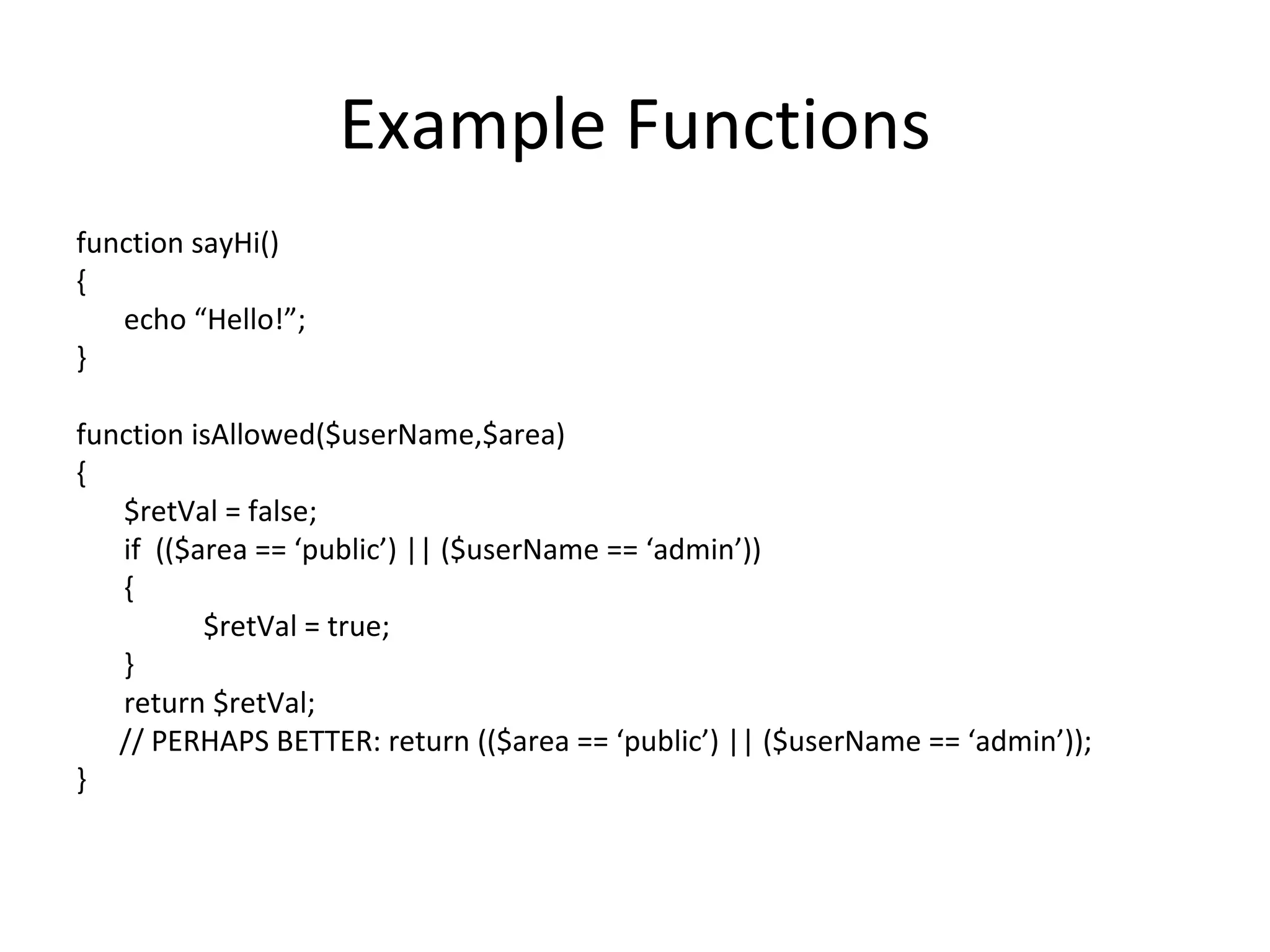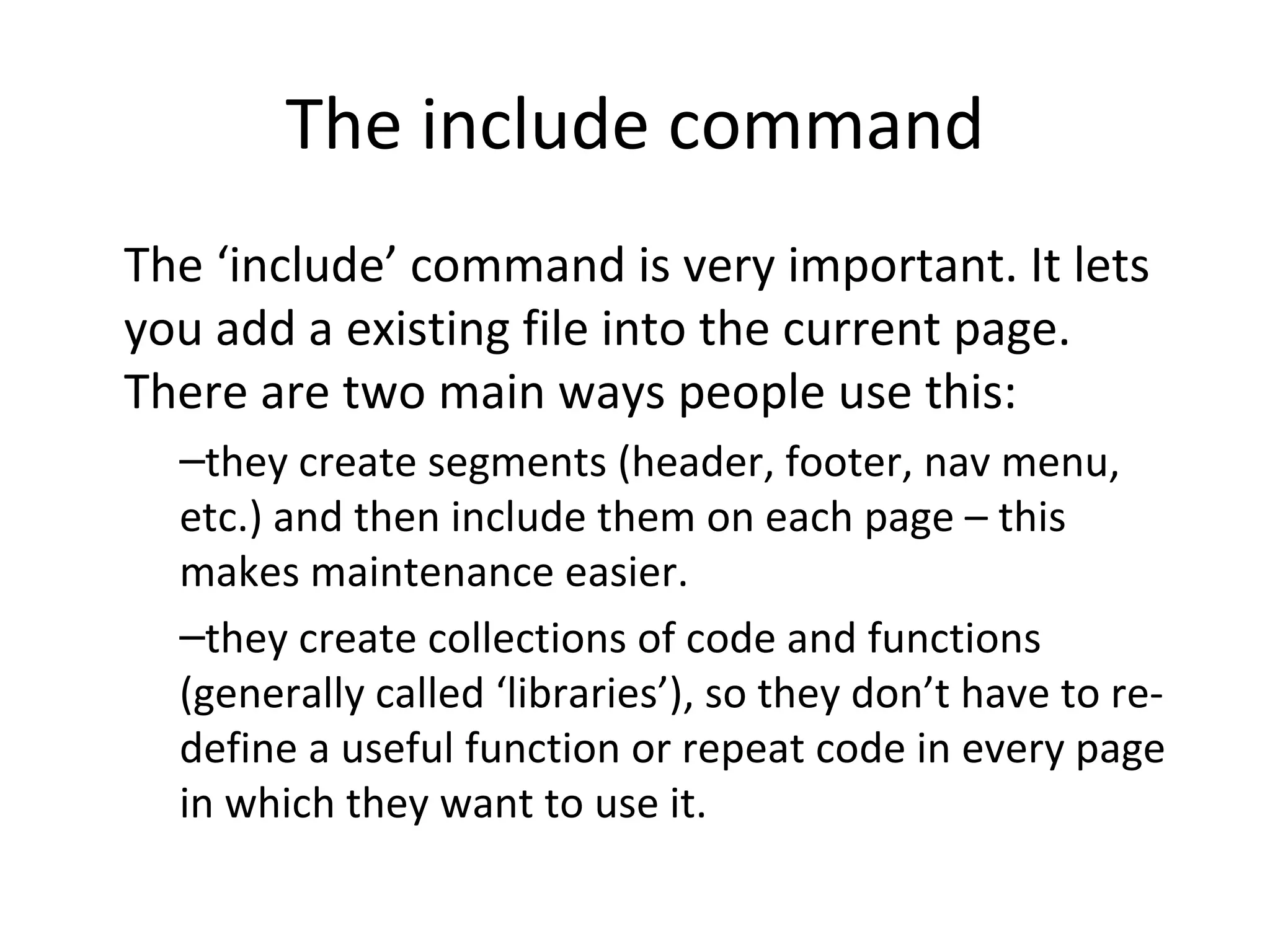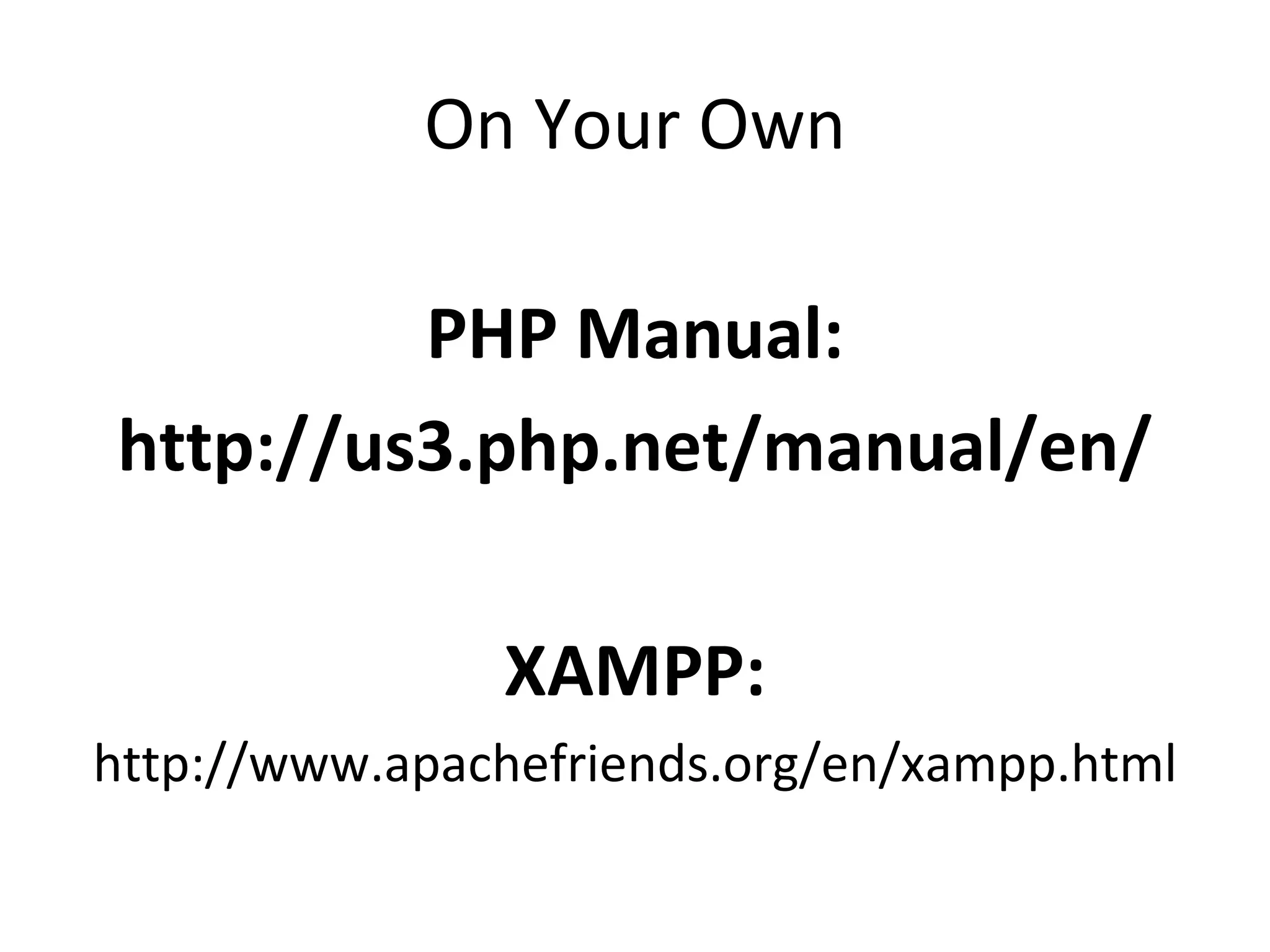PHP is a widely-used open source scripting language suited for web development. It allows embedding code into HTML pages to make them dynamic. PHP code is executed on the server and generates HTML that is sent to the client. Key features include using variables, conditional statements, loops, functions, and interacting with databases or external sources. The document provides an introduction to basic PHP syntax and constructs like variables, arrays, operators, control structures, and functions.
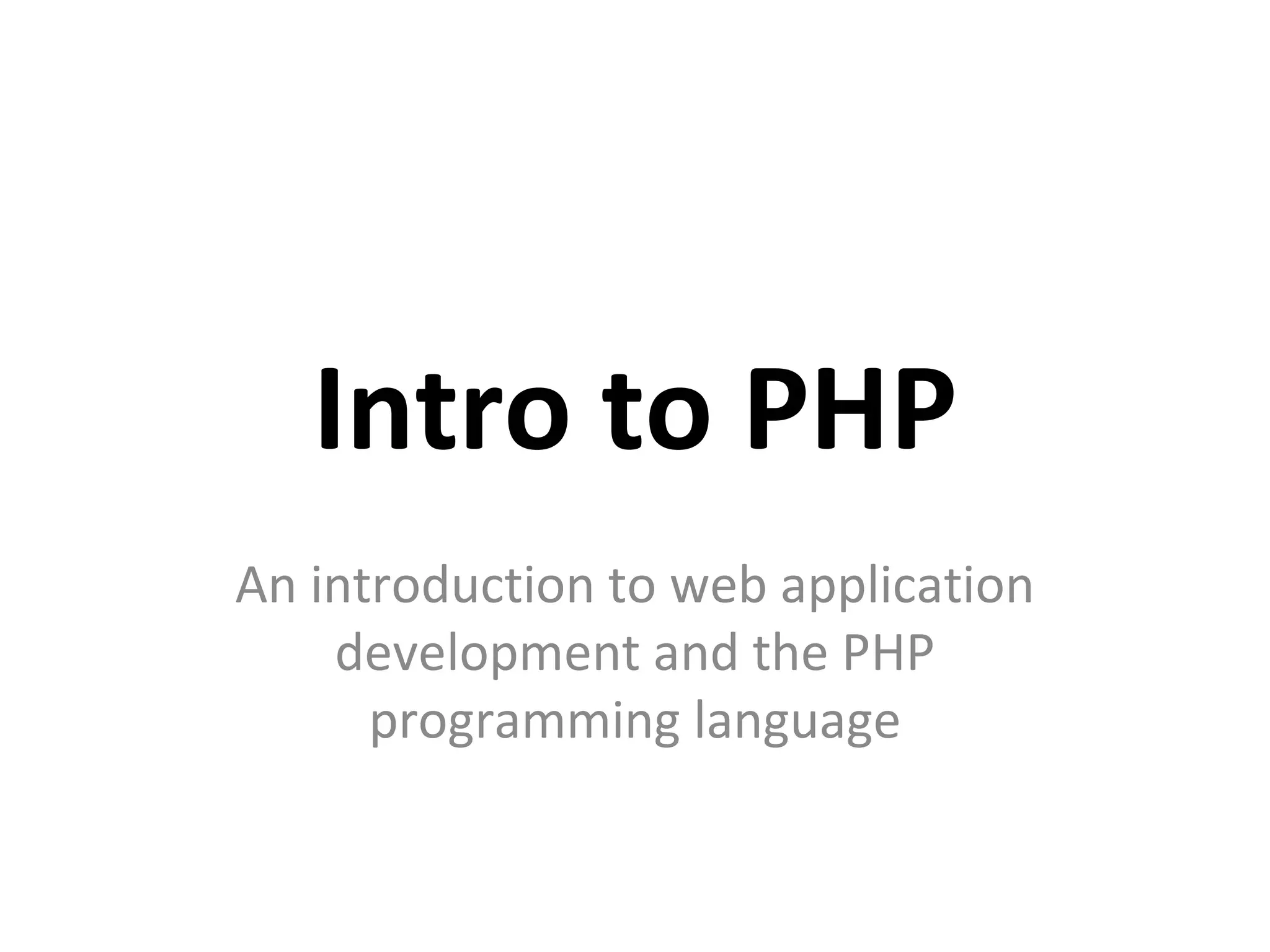
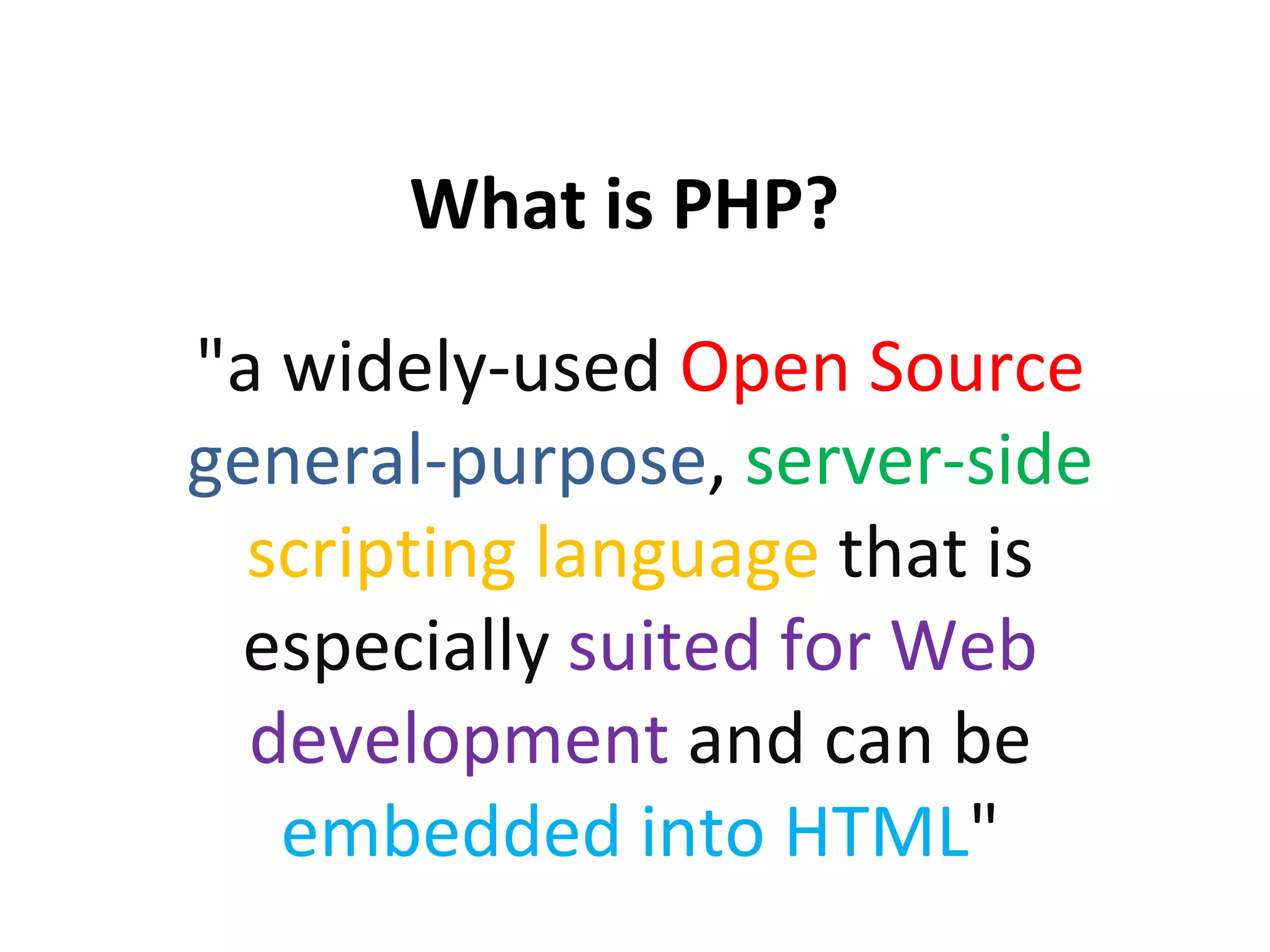
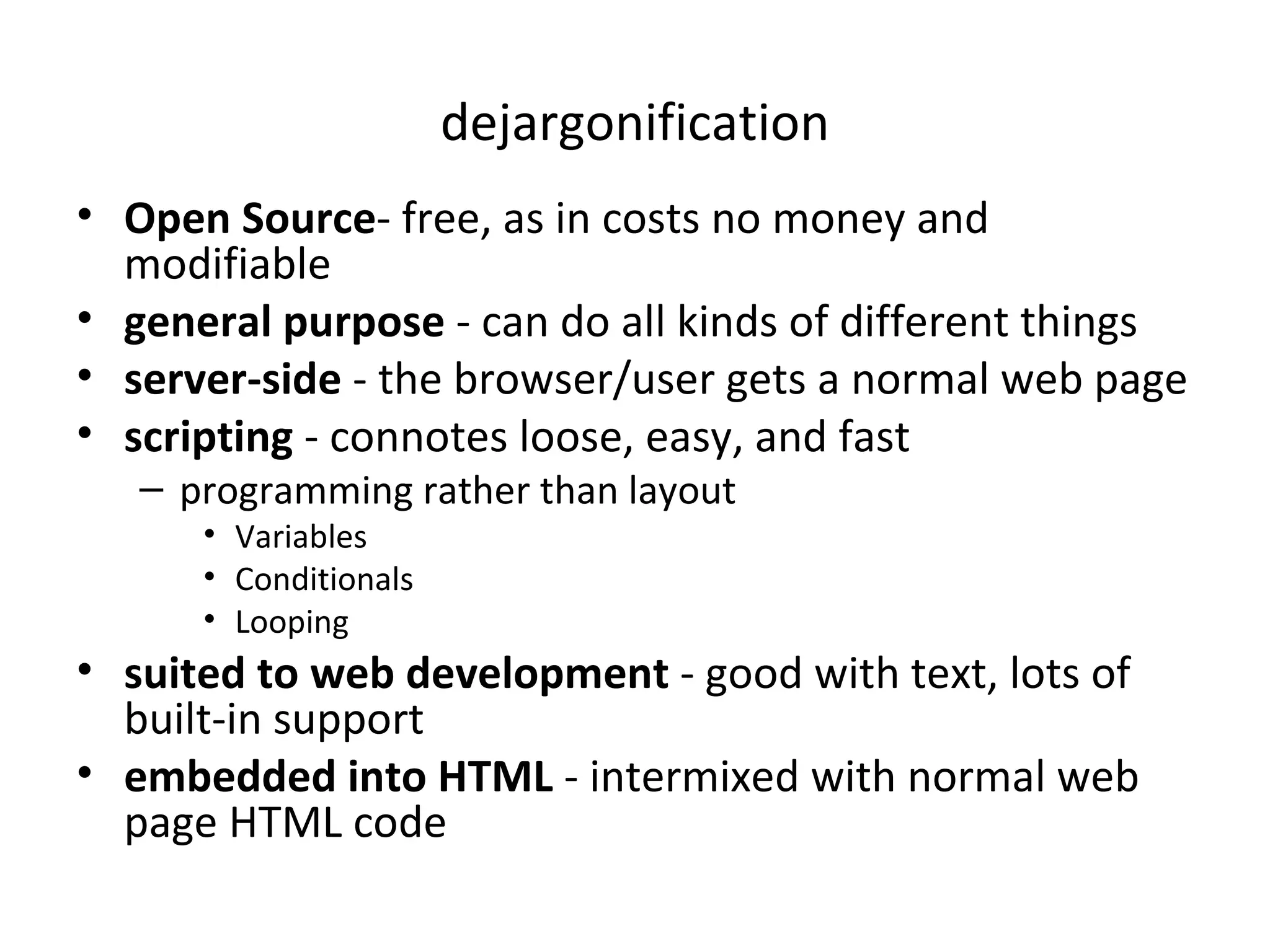
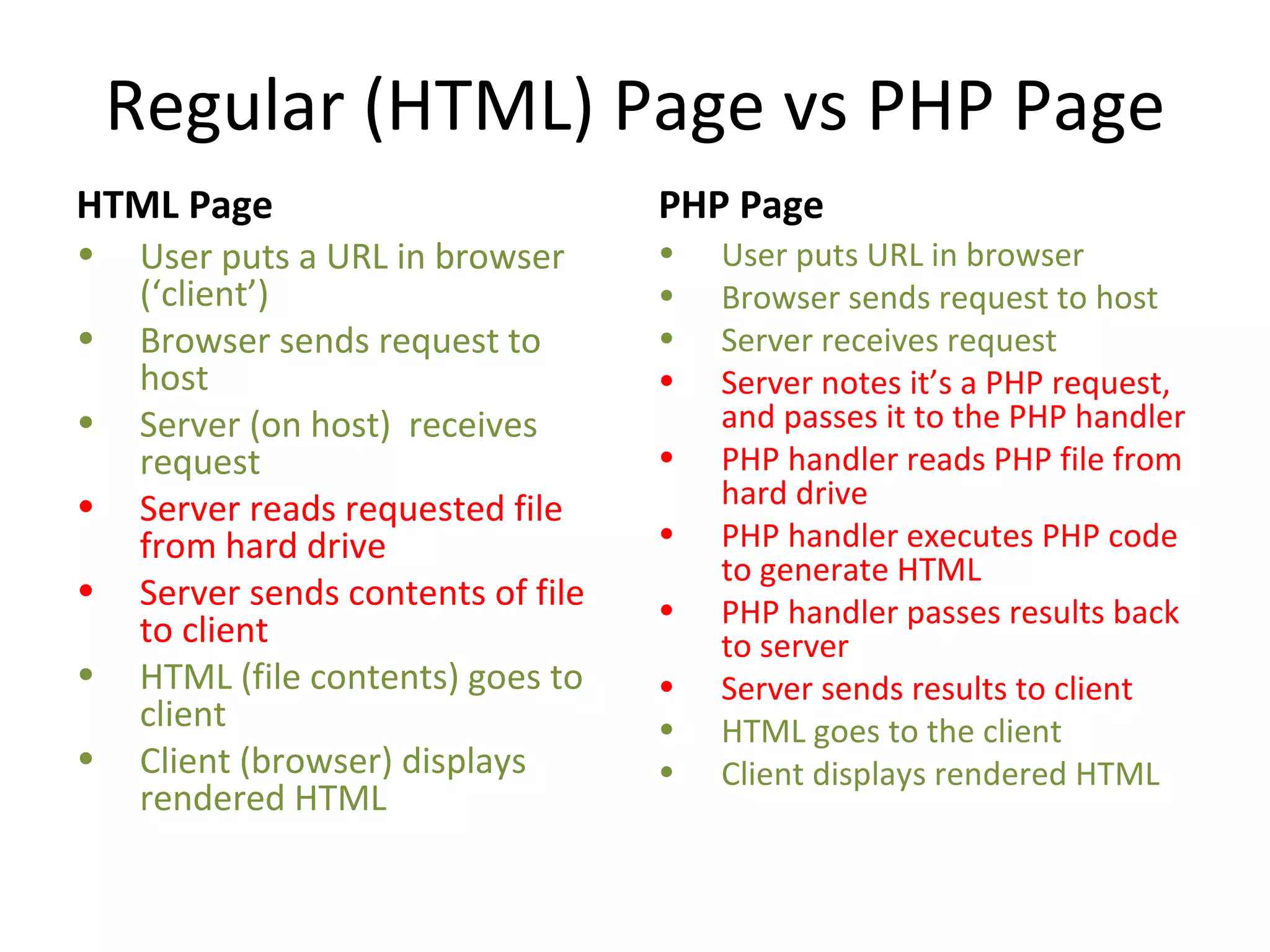
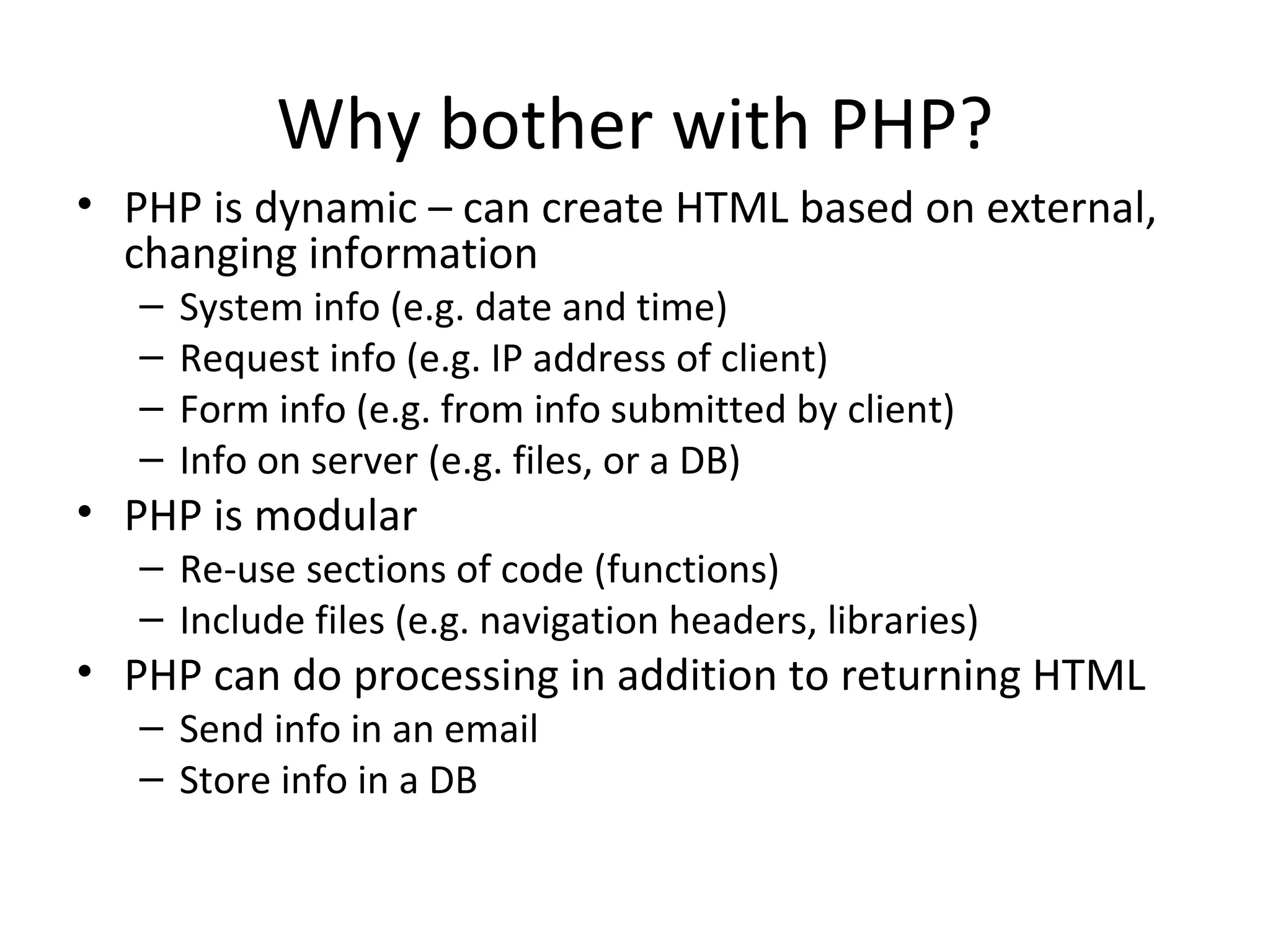
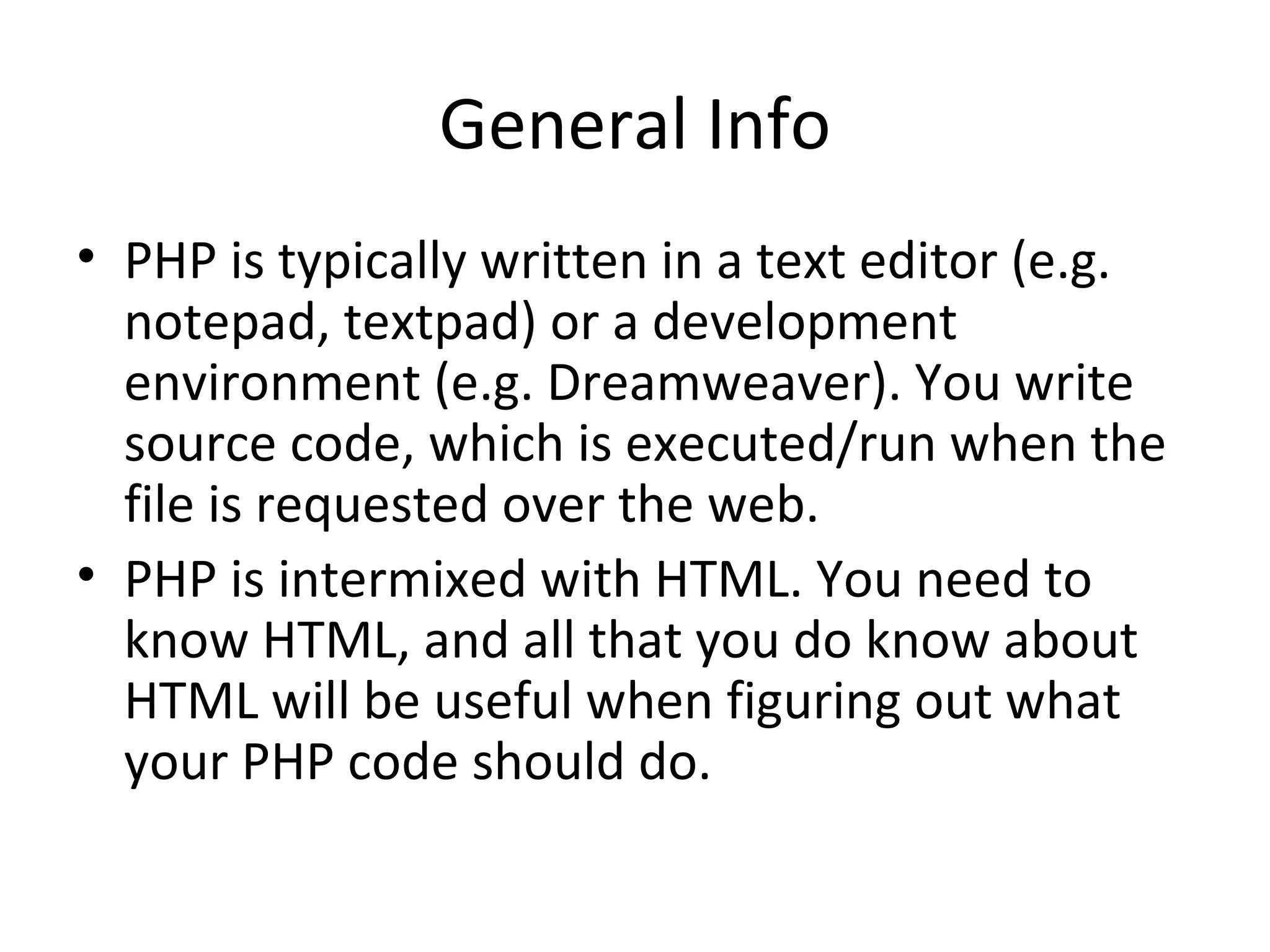
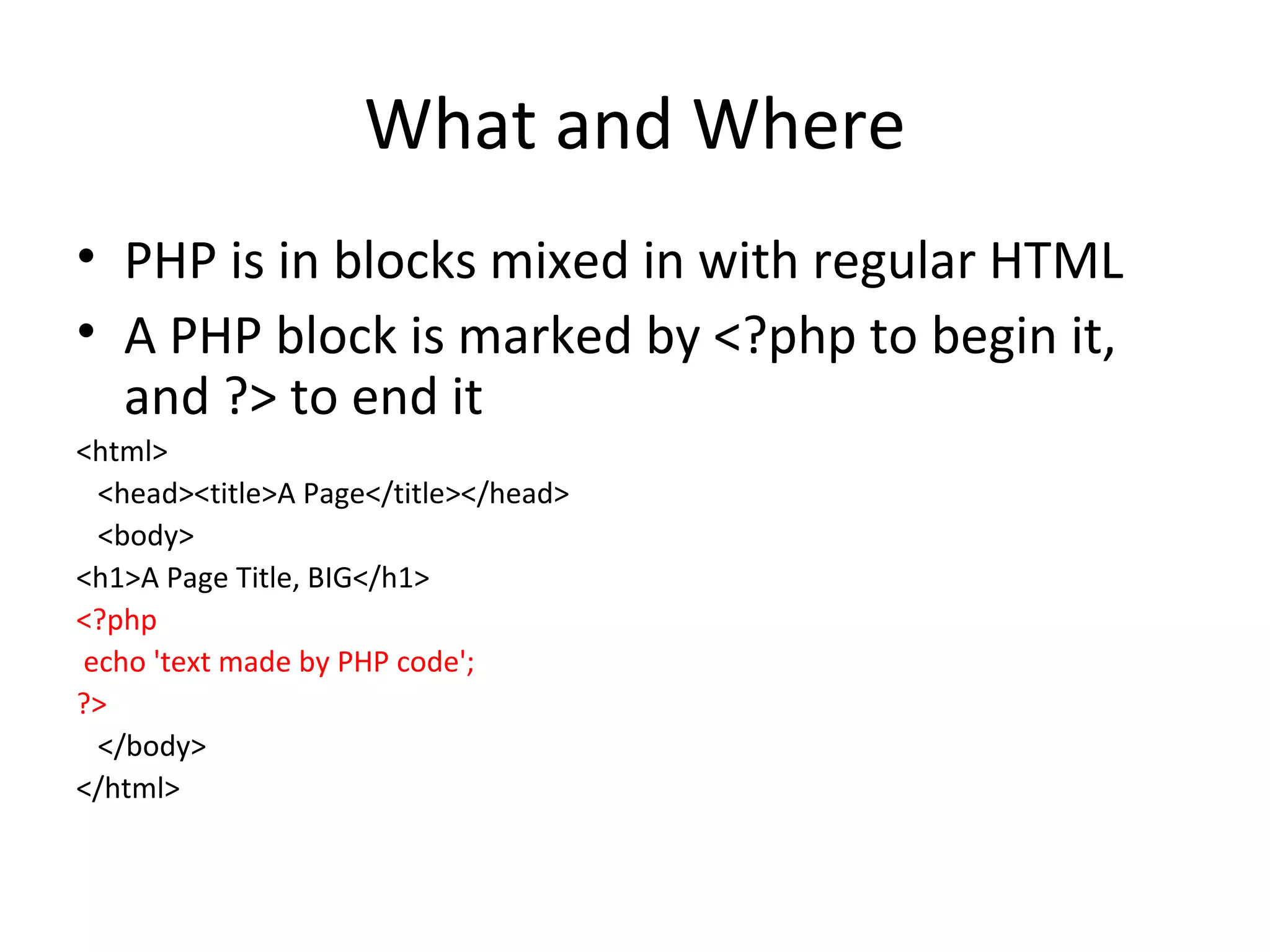
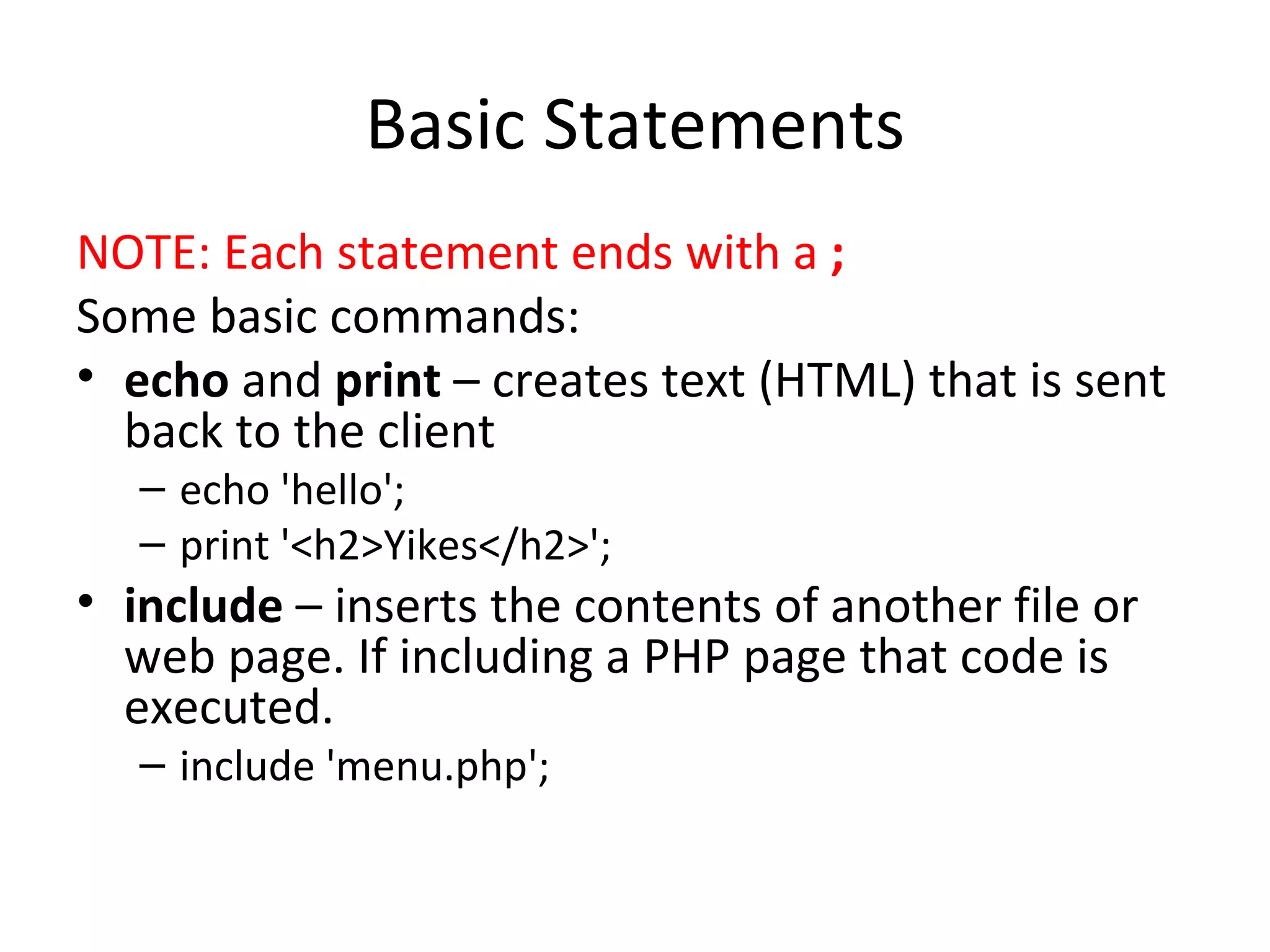
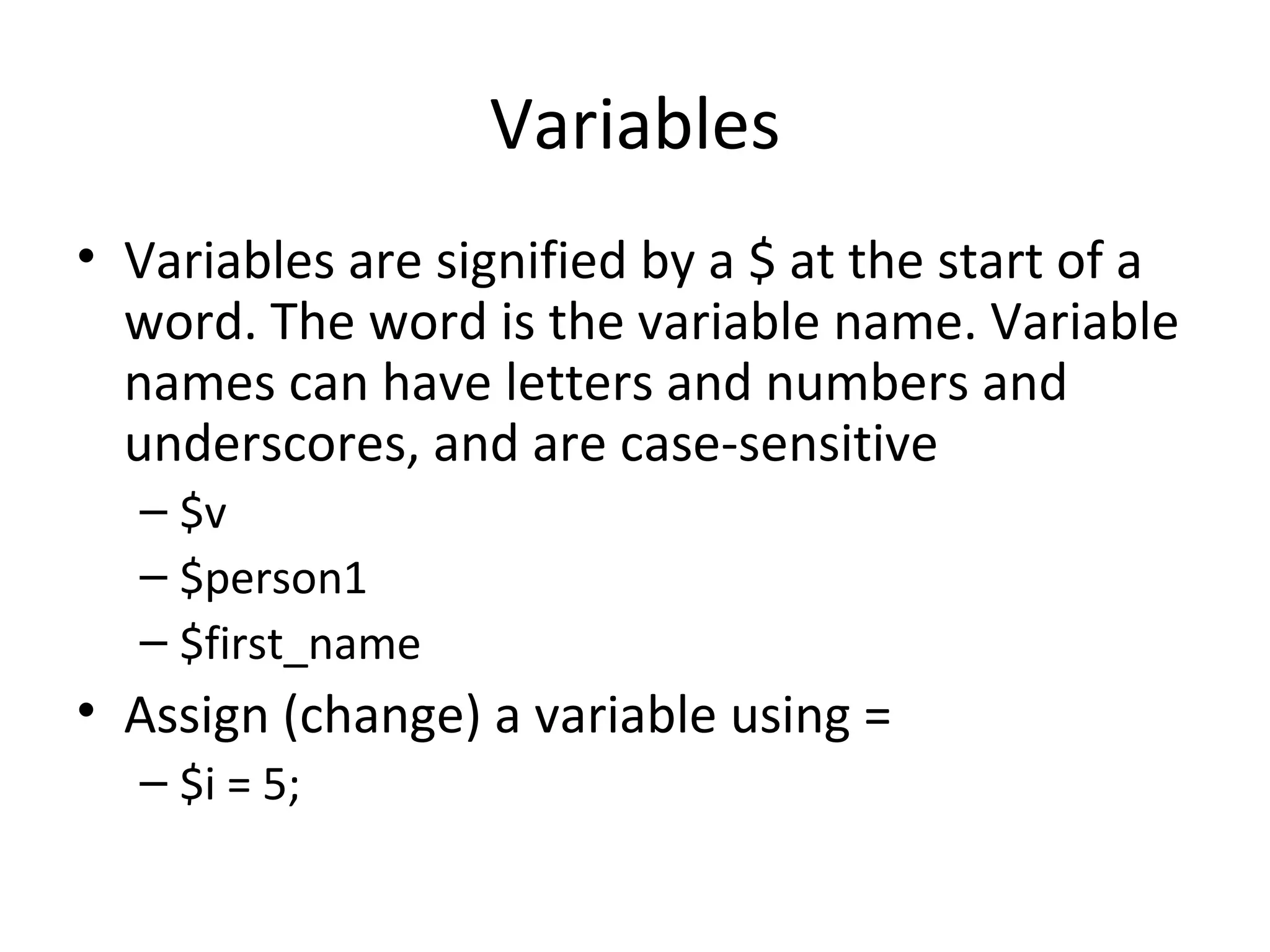
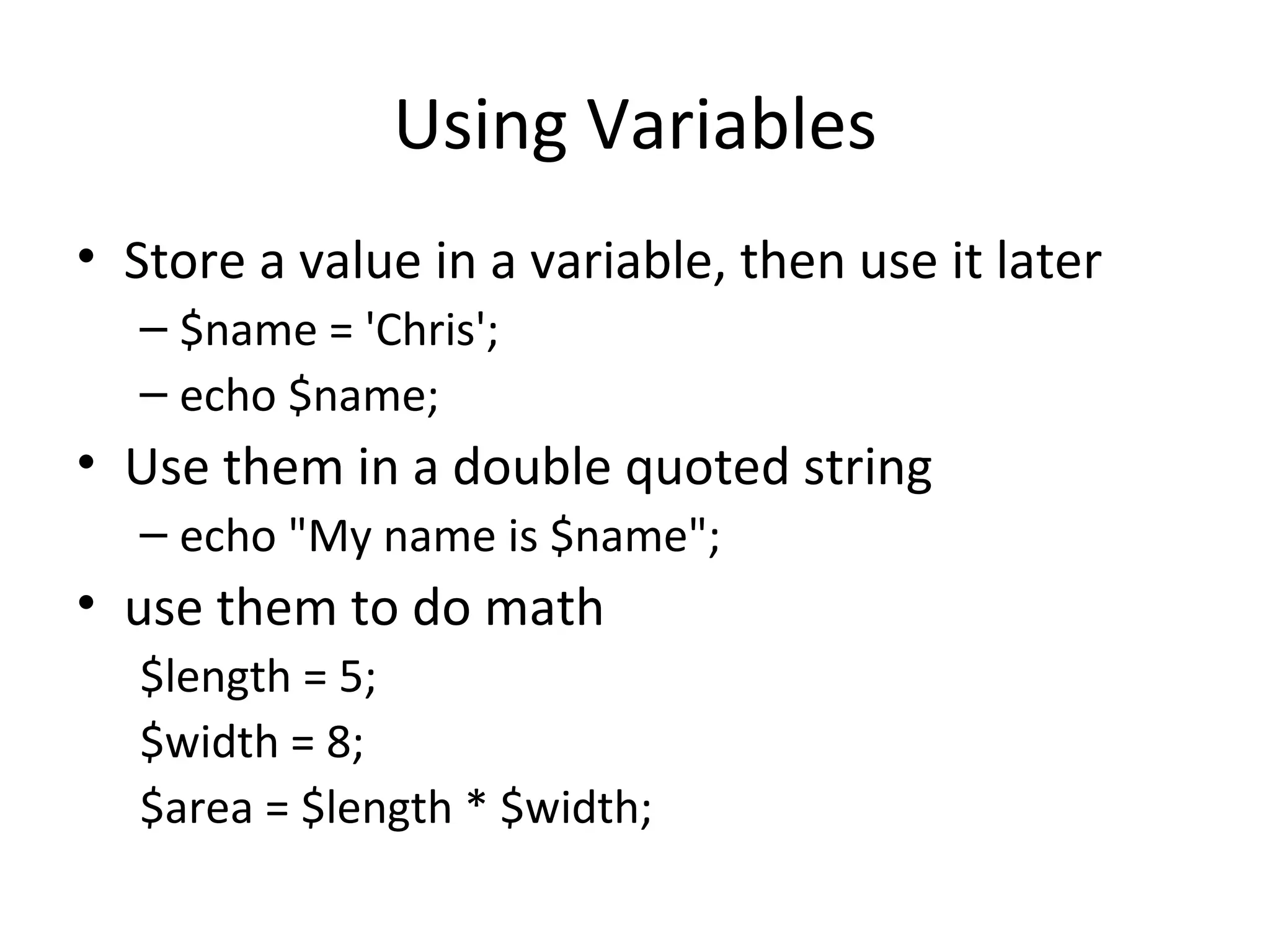
![Arrays Arrays are created with the array() command $people = array(‘Ayesha',‘Pinsi',‘Bret'); Stored values are accessed by an index number, which is in [] after the variable name. NOTE :The index starts at 0! $ people[0] is Ayesha $ people[2] is Bret Arrays can hold any kind of value (including other arrays $mixed = array(4,'Fred',2.5, array(‘red’,’green’)); Use an array variable with an index the same way you'd use any other variable $results[3] = 5+6;](https://image.slidesharecdn.com/introtophpforwit2009-090625073631-phpapp02/75/Introduction-To-Php-For-Wit2009-11-2048.jpg)
![Hashes (Associative Arrays) Where an array uses a number as the index, a hash (a.k.a. associative array) uses a string. $person = array(‘name’ => ‘Jeff’, ‘ class’ => ‘2010’, ‘ sport’ => ‘cross country’); Values are references using the relevant string index (called the ‘key’). $person[‘name’] is Jeff – the key is ‘name’ and the value is ‘Jeff’](https://image.slidesharecdn.com/introtophpforwit2009-090625073631-phpapp02/75/Introduction-To-Php-For-Wit2009-12-2048.jpg)
